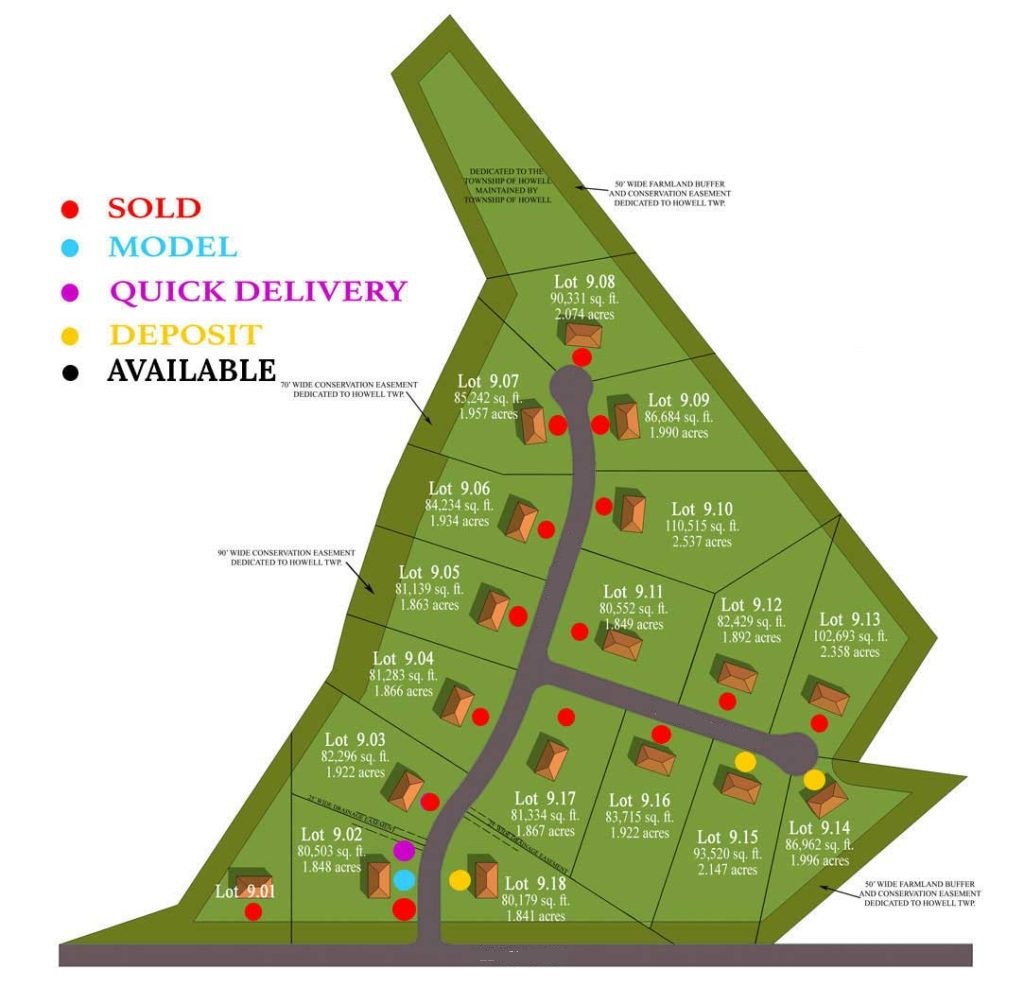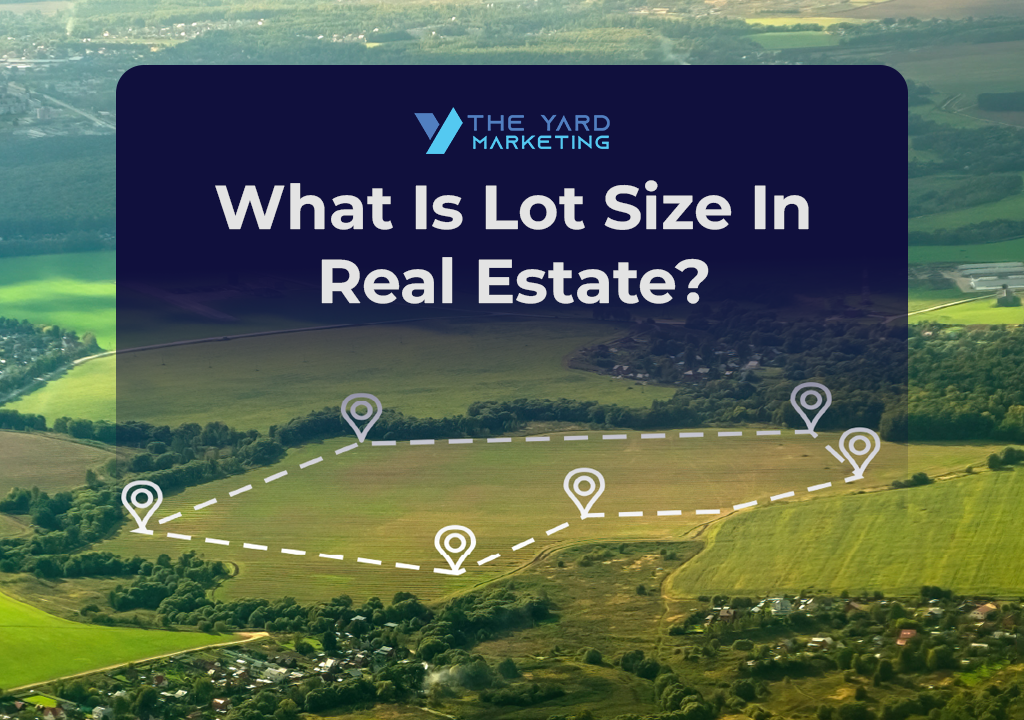Have you ever encountered the term and wondered what is lot size in real estate? Regarding the real estate market, the term “lot size” is a fundamental concept that plays a crucial role in property valuation and purchasing decisions. Whether you’re a seasoned real estate investor or a first-time homebuyer, understanding lot size is vital. You can trust The Yard Marketing for all your real estate needs.
Table of Contents
ToggleWhat Is Lot Size in Real Estate?
Lot size in real estate refers to the physical area of land on which a property or structure is built. It is often measured in square feet or acres, with the size varying significantly from one property to another. Lot size in real estate encompasses the entire land area, including the space occupied by the building(s).
For example, if you own a single-family home with a spacious backyard and a detached garage, the lot size measurement includes the land under the house, the backyard, and the garage. The lot size in real estate is a fundamental characteristic of a property’s description, typically disclosed in property listings.
What Are The Types Of Lot Size In Real Estate?
Lot size in real estate can vary significantly, and they are categorized into different types based on their measurements. Here are some common types of lot sizes:
Standard City Lots
In urban areas, a standard city lot often ranges from 5,000 to 10,000 square feet (approximately 0.11 to 0.23 acres). These lots are typically found in residential neighborhoods and are ideal for single-family homes.
Subdivision Lots
Subdivision lots are commonly found in planned communities or housing developments. They are typically smaller than standard city lots, making them suitable for compact housing designs and efficient land use.
Acreage
Larger properties, often found in rural or suburban areas, are measured in acres. A typical acreage lot can range from 1 to 20 acres or more. These properties offer ample space for various uses, such as farming, ranching, or large estates.
Corner Lots
Corner lots have frontage on two intersecting streets, providing unique design opportunities and increased visibility. It can be valuable due to their larger frontage, allowing for creative landscaping and architectural features.

Why Is Lot Size In Real Estate Important?
The lot size in real estate of a property is crucial for various reasons, including:
Determining Property Value
Lot size in real estate plays a significant role in determining the value of a property. Larger lots are often more valuable, offering more outdoor space and privacy. In contrast, smaller lots might be less expensive but have limited outdoor space.
Zoning Regulations
Local zoning regulations, which vary by area, dictate what structures can be built on a given lot size. Zoning regulations also determine setbacks, building height, and land use. Lot size in real estate compliance with these regulations is essential for construction and renovation projects.
Privacy and Space
Lot size in real estate directly impacts the amount of outdoor space available to property owners. This space can be used for gardens, outdoor entertainment, recreational activities, and more. Larger lots provide more privacy and room for customization.
Investment Potential
Investors often consider lot size when purchasing real estate for development or resale. A property with a larger lot might be subdivided into multiple lots or used for various purposes, including building additional structures.
Future Expansion
A larger lot can be advantageous for homeowners who plan to expand their property in the future. It provides room for home additions, guest houses, or other structures.
How Is Lot Size In Real Estate Measured?
In Pakistan, lot sizes are generally measured in square feet, square yards, or Marlas. Here are the most common lot size measurements being used across the country:
Square Feet
The lot size in real estate is often square feet, especially for residential properties. One acre is equal to approximately 43,560 sq. ft. For example, a lot with a measurement of 10,000 sq. ft. is approximately 0.23 acres.
Square Yards
One square yard is equal to 9 sq.ft. Lot sizes are often expressed in hundreds or thousands of square yards in more suburban and spacious locations.
Marlas
One marla equals 272.25 square feet. Lot sizes in marlas typically range from 5 to 20 marlas, but larger plots can go well beyond. Now you can also buy 5 Marla plots in Pakistan.
LINEAR MEASURE OF LAND
Basic Unit | Conversion Value |
| 1 inch | 2.54 centimeters |
| 1 Foot | 30.48 centimeters |
| 1 Yard | 91.44 centimeters |
| 1 Mile | 1.61 kilometers |
| 1 Ghatta | 8.25 feet |
THE SQUARE MEASURE OF LAND
Basic Unit | Conversion Value |
| 1 Square Foot | 0.093 square meter |
| 1 Square Yard | 0.836 square meter |
| 1 Square Mile | 2.59 square kilometer (259 hectares) |
| 1 acre | 0.405 hectares |
| 1 Acre | 4 Bigha 16 Biswa (4,840 sq. yds) |
| 1 Bigha | 20 Biswas (1,008 sq. yds) |
| 1 Biswa | 50 sq. yds |
UNITS NATIVE TO PAKISTAN
Basic Unit | Conversion Value |
| 1 Karam | 5.5 feet |
| 1 Marla | 9 sq karams (272.25 sq ft) |
| 1 Kanal | 20 marlas (5,445 sq ft) |
| 1 Keela | 8 kanaals (43,560 sq ft = 1 acre) |
| 1 Marabba | 25 keelas (1,089,000 sq ft = 25 acres) |
How Does Lot Size Impact Property Values?
Lot size in real estate has a direct impact on property values. Properties with larger lots are generally more expensive. A larger lot provides more space for outdoor activities, landscaping, and additional structures. People value privacy and open space, and larger lots offer these advantages.
A larger lot can attract investors and developers because it often has the potential for further development. Buyers are often willing to pay a premium for properties with larger lots, especially in suburban and rural areas. Local zoning regulations can also influence property values.
In urban areas, where land is scarce, properties with smaller lots may have higher values. In contrast, rural areas often have larger lot sizes, and properties with extensive acreage can be quite valuable.
Zoning Regulations and Lot Size
Local zoning regulations and ordinances are critical in determining the minimum and maximum lot sizes for properties within a specific area. These regulations are established by local governments and are designed to maintain uniformity and control land use in a community of real estate.
- Zoning regulations often specify the minimum lot size required for a particular land use type, such as residential, commercial, or industrial.
- Setbacks refer to the minimum distance a structure must be set back from the property lines or the street. Setbacks are typically specified in zoning regulations to ensure structures are within the property boundaries.
- Zoning regulations may also limit the density of structures on a property, particularly in residential areas. Zoning regulations also determine how the land can be used.
In some cases, property owners can request zoning variances from local authorities to deviate from the standard lot size requirements. These variances are granted on a case-by-case basis and often require demonstrating that the variance is necessary for a legitimate reason. To learn more, follow us at The Yard Marketing.
